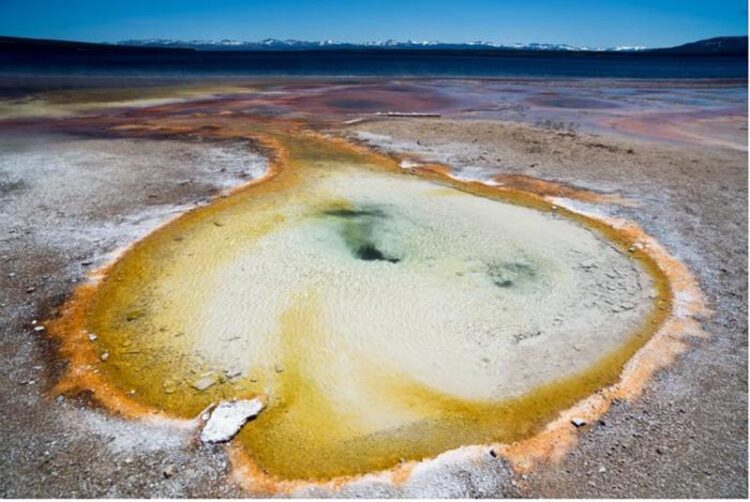Life in boiling water

Scientists conducted microbial DNA sampling at a Yellowstone National Park hot spring for a study sponsored by DOE’s Biological and Environmental Research program, the National Science Foundation and NASA.
Credit: Mircea Podar/ORNL, U.S. Dept. of Energy
Scientists find evolutionary clues while examining microbes in far-flung hot springs.
Oak Ridge National Laboratory scientists studied hot springs on different continents and found similarities in how some microbes adapted despite their geographic diversity. The findings yield clues to the evolution of life and whether some of the hardiest microbes may be harnessed for biotechnology.
The study was the first of its kind to sample hot springs on three continents with water temperatures above 65 C (149 F) in the United States, Iceland and Japan.
The environments have unique geology and chemistry, almost like a fingerprint, so it was surprising to find highly related microbes separated by thousands of miles, said ORNL’s Mircea Podar, co-lead of the study with researchers at Montana State University.
“We found common microbes, but also diversity as the microorganisms adapted to local conditions,” Podar said. The scientists theorize that tectonic conditions and geology of the hot springs are at play, providing new insights into how life and the Earth have co-evolved. —Stephanie Seay
Journal: Environmental Microbiology
DOI: 10.1111/1462-2920.16472
Article Title: Tectonic and geological setting influence hot spring microbiology
Article Publication Date: 8-Aug-2023
Media Contact
Kim Askey
DOE/Oak Ridge National Laboratory
askeyka@ornl.gov
Office: 865-576-2841
Original Source
All latest news from the category: Life Sciences and Chemistry
Articles and reports from the Life Sciences and chemistry area deal with applied and basic research into modern biology, chemistry and human medicine.
Valuable information can be found on a range of life sciences fields including bacteriology, biochemistry, bionics, bioinformatics, biophysics, biotechnology, genetics, geobotany, human biology, marine biology, microbiology, molecular biology, cellular biology, zoology, bioinorganic chemistry, microchemistry and environmental chemistry.
Newest articles
Faster, more energy-efficient way to manufacture an industrially important chemical
Zirconium combined with silicon nitride enhances the conversion of propane — present in natural gas — needed to create in-demand plastic, polypropylene. Polypropylene is a common type of plastic found…

Energy planning in Ghana as a role model for the world
Improving the resilience of energy systems in the Global South. What criteria should we use to better plan for resilient energy systems? How do socio-economic, technical and climate change related…

Artificial blood vessels could improve heart bypass outcomes
Artificial blood vessels could improve heart bypass outcomes. 3D-printed blood vessels, which closely mimic the properties of human veins, could transform the treatment of cardiovascular diseases. Strong, flexible, gel-like tubes…




















